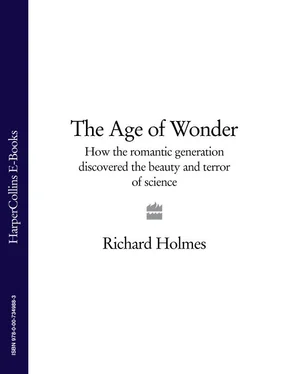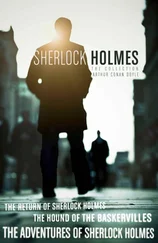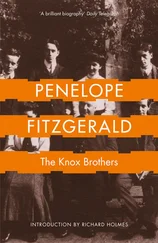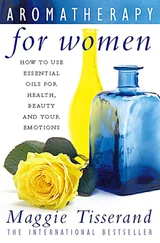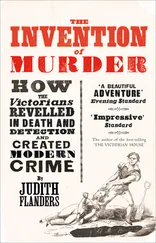1. Joseph Banks in Paradise
2. Herschel on the Moon
3. Balloonists in Heaven
4. Herschel Among the Stars
5. Mungo Park in Africa
6. Davy on the Gas
7. Dr Frankenstein and the Soul
8. Davy and the Lamp
9. Sorcerer and Apprentice
10. Young Scientists
Epilogue
Cast List
Keep Reading
Bibliography
References
Index
Acknowledgements
About the Author
Also by the Author
About the Publisher
In my first chemistry class, at the age of fourteen, I successfully precipitated a single crystal of mineral salts. This elementary experiment was done by heating a solution of copper sulphate (I think) over a Bunsen burner, and leaving it to cool overnight. The next morning there it lay at the bottom of my carefully labelled test tube: a single beautiful crystal, the size of a flattened Fox’s Glacier Mint, a miniature ziggurat with a faint blue opalescence, propped up against the inside of the glass (too big to lie flat), monumental and mysterious to my eyes. No one else’s test tube held anything but a few feeble grains. I was triumphant, my scientific future assured.
But it turned out that the chemistry master did not believe me. The crystal was too big to be true. He said (not at all unkindly) that I had obviously faked it, and slipped a piece of coloured glass into the test tube instead. It was quite a good joke. I implored him, ‘Oh, test it, sir; just test it!’ But he refused, and moved on to other matters. In that moment of helpless disappointment I think I first glimpsed exactly what real science should be. To add to it, years later I learned the motto of the Royal Society: Nullius in Verba -‘Nothing upon Another’s Word’. I have never forgotten this incident, and have often related it to scientific friends. They nod sympathetically, though they tend to add that I did not (as a matter of chemical fact) precipitate a crystal at all-what I did was to seed one, a rather different process. No doubt this is so. But the eventual consequence, after many years of cooling, has certainly been to precipitate this book.
The Age of Wonder is a relay race of scientific stories, and they link together to explore a larger historical narrative. This is my account of the second scientific revolution, which swept through Britain at the end of the eighteenth century, and produced a new vision which has rightly been called Romantic science. 1
Romanticism as a cultural force is generally regarded as intensely hostile to science, its ideal of subjectivity eternally opposed to that of scientific objectivity. But I do not believe this was always the case, or that the terms are so mutually exclusive. The notion of wonder seems to be something that once united them, and can still do so. In effect there is Romantic science in the same sense that there is Romantic poetry, and often for the same enduring reasons.
The first scientific revolution, of the seventeenth century, is familiarly associated with the names of Newton, Hooke, Locke and Descartes, and the almost simultaneous foundations of the Royal Society in London and the Académie des Sciences in Paris. Its existence has long been accepted, and the biographies of its leading figures are well known. ♣ But this second revolution was something different. The first person who referred to a ‘second scientific revolution’ was probably the poet Coleridge in his Philosophical Lectures of 1819. 2 It was inspired primarily by a sudden series of breakthroughs in the fields of astronomy and chemistry. It was a movement that grew out of eighteenth-century Enlightenment rationalism, but largely transformed it, by bringing a new imaginative intensity and excitement to scientific work. It was driven by a common ideal of intense, even reckless, personal commitment to discovery.
It was also a movement of transition. It flourished for a relatively brief time, perhaps two generations, but produced long-lasting consequences-raising hopes and questions-that are still with us today. Romantic science can be dated roughly, and certainly symbolically, between two celebrated voyages of exploration. These were Captain James Cook’s first round-the-world expedition aboard the Endeavour, begun in 1768, and Charles Darwin’s voyage to the Galapagos islands aboard the Beagle, begun in 1831. This is the time I have called the Age of Wonder, and with any luck we have not yet quite outgrown it.
The idea of the exploratory voyage, often lonely and perilous, is in one form or another a central and defining metaphor of Romantic science. That is how William Wordsworth brilliantly transformed the great Enlightenment image of Sir Isaac Newton into a Romantic one. While a university student in the 1780s Wordsworth had often contemplated the full-size marble statue of Newton, with his severely close-cropped hair, that still dominates the stone-flagged entrance hall to the chapel of Trinity College, Cambridge. As Wordsworth originally put it, he could see, a few yards from his bedroom window, over the brick wall of St John’s College,
The Antechapel, where the Statue stood
Of Newton, with his Prism and silent Face.
Sometime after 1805, Wordsworth animated this static figure, so monumentally fixed in his assured religious setting. Newton became a haunted and restless Romantic traveller amidst the stars:
And from my pillow, looking forth by light
Of moon or favouring stars, I could behold
The Antechapel where the Statue stood
Of Newton, with his prism and his silent face,
The marble index of a Mind for ever
Voyaging through strange seas of Thought, alone. 3
Around such a vision Romantic science created, or crystallised, several other crucial conceptions-or misconceptions-which are still with us. First, the dazzling idea of the solitary scientific ‘genius’, thirsting and reckless for knowledge, for its own sake and perhaps at any cost. This neo-Faustian idea, celebrated by many of the imaginative writers of the period, including Goethe and Mary Shelley, is certainly one of the great, ambiguous creations of Romantic science which we have all inherited. Closely connected with this is the idea of the ‘Eureka moment’, the intuitive inspired instant of invention or discovery, for which no amount of preparation or preliminary analysis can really prepare. Originally the cry of the Greek philosopher Archimedes, this became the ‘fire from heaven’ of Romanticism, the other true mark of scientific genius, which also allied it very closely to poetic inspiration and creativity. Romantic science would seek to identify such moments of singular, almost mystical vision in its own history. One of its first and most influential examples was to become the story of the solitary, brooding Newton in his orchard, seeing an apple fall and ‘suddenly’ having his vision of universal gravitation. This story was never told by Newton at the time, but only began to emerge in the mid-eighteenth century, in a series of memoirs and reminiscences. ♣
The notion of an infinite, mysterious Nature, waiting to be discovered or seduced into revealing all her secrets, was widely held. Scientific instruments played an increasingly important role in this process of revelation, allowing man not merely to extend his senses passively-using the telescope, the microscope, the barometer-but to intervene actively, using the voltaic battery, the electrical generator, the scalpel or the air pump. Even the Montgolfier balloon could be seen as an instrument of discovery, or indeed of seduction.
There was, too, a subtle reaction against the idea of a purely mechanistic universe, the mathematical world of Newtonian physics, the hard material world of objects and impacts. These doubts, expressed especially in Germany, favoured a softer ‘dynamic’ science of invisible powers and mysterious energies, of fluidity and transformations, of growth and organic change. This is one of the reasons that the study of electricity (and chemistry in general) became the signature science of the period; though astronomy itself, once the exemplary science of the Enlightenment, would also be changed by Romantic cosmology.
Читать дальше
